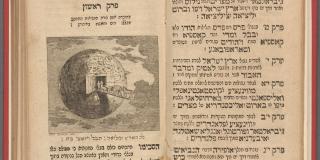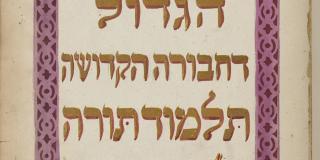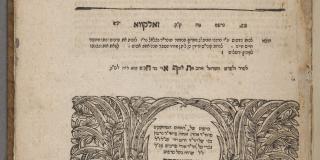
Halakhah adam mi-Yiśraʼel
Yiśraʼel ben Yaʻaḳov, a.b.d. bi-ḳ.ḳ. Zalozits uvi-ḳ.ḳ. Loḳaṭsh, active 18th century
Halakhah adam mi-Yiśraʼel le-ferushim ba-mekomot ha-setumim: ba-Shas, be-Rashi uva-Tosafot (Halakhah of the Man from Israel for Interpretation of Complex Places in Talmud, Rashi’s commentary and Tosafot)
Zolḳṿa, ca. 1739
Halakhah is the totality of Jewish religious law, and the book offers a practical guide for the daily life of a religious Jew.
The author, Israel ben Yakov, who served as head of a rabbinical court in Załoźce and Łokacz, based his work on the earlier writings of Avraham Abele (1635–1682), a recognized Halakhah scholar. Early books printed in Eastern Europe often were written by local authors, who catered to the needs of their respective communities, while the classic authoritative texts were still imported from the major centers of Hebrew printing in Europe, such as Amsterdam.
The town of Zolḳṿa (or Zhovkva) in the Lviv region of contemporary Ukraine was an important center of early Hebrew printing from 1692 through the late 18th century. Even so, the books produced in Zhovkva frequently featured the place of publication as Amsterdam—a highly esteemed hub of Jewish printing—in large letters and mentioned the true location in smaller ones, to raise the books’ prestige.
The New York Public Library believes that this item is in the public domain under the laws of the United States, but did not make a determination as to its copyright status under the copyright laws of other countries. This item may not be in the public domain under the laws of other countries. Though not required, if you want to credit us as the source, please use the following statement, "From The New York Public Library," and provide a link back to the item on our Digital Collections site. Doing so helps us track how our collection is used and helps justify freely releasing even more content in the future.






